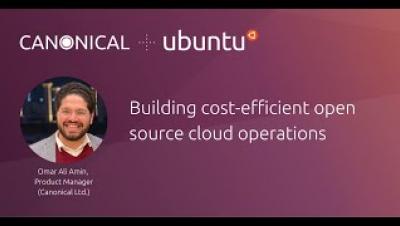Operations | Monitoring | ITSM | DevOps | Cloud
Canonical
CIS benchmark compliance: Introducing the Ubuntu Security Guide
The CIS benchmark has hundreds of configuration recommendations, so hardening and auditing a Linux system manually can be very tedious. Every administrator of systems that need to comply with that benchmark would wish that this process is easily usable and automatable. Why is that? Manual configuration of such a large number of rules leads to mistakes – mistakes that cause not only functional problems, but may also cause security breaches.
Ubuntu introduces the Ubuntu Security Guide to ease DISA-STIG compliance
January 17th: London, UK – Canonical, the company behind Ubuntu, the world’s most popular operating system across private and public clouds, now offers the Ubuntu Security Guide tooling for compliance with the DISA Security Technical Implementation Guide (STIG) in Ubuntu 20.04 LTS. The new automated tooling builds on Canonical’s track record of designing Ubuntu for high security and regulated workloads, powering U.S. government agencies, prime contractors, and service providers.
Canonical Kubernetes for Financial Services
Adopting a container-first approach represents an unrivalled opportunity for financial institutions to increase system efficiency and resource utilisation, improve security, introduce automation, and accelerate innovation. Containers offer a logical packaging tool in which applications can be decoupled from the underlying infrastructure on which they run.
Kubernetes for Finservs - Unlocking success in digital transformations
The global health crisis has accelerated the digital transformation within the financial services industry.
Building cost-efficient open source cloud operations
OpenStack challenges 2022
Happy New Year 2022! The fireworks are all fired, the champagne is over. It is time to get back to work. We are glad to see you here though. 2021 was a good year for OpenStack and its Ubuntu-based community. First, we all have seen Ubuntu becoming the number one operating system (OS) for OpenStack deployment. Then, the Open Infrastructure Foundation (OIF) reported explosive growth in the number of production OpenStack clouds. The community grew and settled on the most convenient platform.
Application composability and the shipping container
The previous blog post talked about the composability of applications. The key element for composing applications is defining the relations between application elements. And supporting relations is one of the advantages of the Charmed Operator Framework – including its runtime, the Charmed Operator Lifecycle Manager.
Application composability - a cloud computing perspective
Let’s remember the time in the 2000s when companies introduced their cloud computing offerings at a large scale. New services were put into the popular IaaS, PaaS, and SaaS categories. New kinds of storage and messaging technologies were promoted. Also, novel approaches were discussed, such as designing applications for horizontal scalability and eventual consistency.
Deploy and maintain applications with Charmed Operators
Recently, I remembered a situation when I was in elementary school and visited a friend at his house. At some point, his mother wanted us to go to a neighbour and ask to borrow some eggs. We went a few houses down, opened the garden gate, entered through the door to the house, and arrived in the kitchen calling out for the person. But no one was at home, so we left and returned without eggs.








